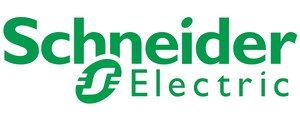New Schneider Electric White Paper Details Guidance on Using Li-ion Technology in UPS Systems
LONDON, January 22, 2019 /PRNewswire/ --
- Li-ion has gained popularity in edge computing and data centre applications
- It provides many advantages including smaller weight and size as well as having an increased lifecycle when compared with traditional lead-acid alternatives
- As such, any increase in capital expenditure (CAPEX) will be offset by lower TCO via longer lifecyle, greater number of charge cycles and simplified maintenance
Lithium-ion batteries have continued to become a popular choice in edge computing and larger data centre applications. They offer several advantages over traditional valve-regulated lead-acid (VRLA) batteries and are deployed in many single and three-phase uninterruptible power supply (UPS) systems today. Their benefits include longer operational lifetimes, smaller size and weight for equivalently rated systems and faster recharge cycles. New technological developments and larger volume shipments have also helped to reduce their cost premium, which has in turn increased their appeal.
Some tradeoffs are of course inevitable, as is the need for new procedures to ensure safe handling and optimal operation of Li-ion UPS systems . A new White Paper from Schneider Electric, the leader in digital transformation of energy management and automation, offers a comprehensive guide to Li-ion technologies and the capabilities associated with their deployment in UPS systems.
Entitled White Paper #231 "FAQs for Using Lithium-ion Batteries with a UPS ", the paper provides key guidance on essential topics concerning Li-ion batteries in a question-and-answer format. It begins with a brief description and comparison of the essential science underlying both Lithium-ion and VRLA chemistry and continues to describe variations in available Li-ion batteries, including how they can best be deployed within specific data centre applications.
Also discussed are the numerous advantages Li-ion batteries deliver over their VRLA counterparts, including their size, weight and operational lifetime. An explanation of why one must currently pay an increased price premium for Li-ion compared with VRLA technology is also provided, with reasons why one can expect that disadvantage to diminish over time. For example, the cost of Li-ion has already reduced, being 10 times more expensive than VRLA just a few years ago, to only 1.2 to 2 times more expensive as of 2018.
The paper discusses how use of Li-ion delivers a lower total cost of ownership (TCO) through its longer lifecycle, greater tolerance to high operating temperatures and ease of maintenance. Due to their chemical composition, they do not contain hazardous materials, as do lead-acid batteries, allowing them to be discarded more easily after use without damaging the environment. As their use gains in popularity and perhaps becomes more regulated, it is expected that more sustainable opportunities will evolve to recycle used large format li-ion batteries and recover the materials contained within.
Depending on the design configuration of a UPS, it may also be possible to substitute Li-ion batteries for the existing VRLA units with only a change in firmware required. However, this will depend on other elements of the UPS such as the inverter, charger and mechanical design being compatible with the different batteries.
The paper discussed compares how regulations for transporting Li-ion batteries will depend on the size and quantity of units being shipped, although batteries of any type will face restrictions based on safety requirements for transportation.
White Paper No 231 "FAQs for Using Lithium-ion Batteries with a UPS" is available now for free download by clicking here or visiting http://www.apc.com/wp?wp=231.
About the authors
Patrick Donovan is a Senior Research Analyst for the Data Center Science Center at Schneider Electric. He has over 20 years of experience developing and supporting critical power and cooling systems for Schneider Electric's IT Business unit including several award-winning power protection, efficiency and availability solutions.
Martin Zacho is a Senior Engineer in Energy Storage Technologies at Schneider Electric, Secure Power, IT Business. He has been involved in all aspects of energy storage technologies since 2008 with a special focus on energy storage for large 3-phase UPS's.
About Schneider Electric
Schneider Electric is leading the Digital Transformation of Energy Management and Automation in Homes, Buildings, Data Centers, Infrastructure and Industries. With global presence in over 100 countries, Schneider is the undisputable leader in Power Management - Medium Voltage, Low Voltage and Secure Power, and in Automation Systems. We provide integrated efficiency solutions, combining energy, automation and software. In our global Ecosystem, we collaborate with the largest Partner, Integrator and Developer Community on our Open Platform to deliver real-time control and operational efficiency. We believe that great people and partners make Schneider a great company and that our commitment to Innovation, Diversity and Sustainability ensures that Life Is On everywhere, for everyone and at every moment. schneider-electric.com
Related resources:
- White Paper No 231 "FAQs for Using Lithium-ion Batteries with a UPS"
- Smart-UPS Lithium-Ion UPS Battery technology Can Significantly Cut Your TCO
Hashtags:#EcoStruxure #IoT #Li-Ion #EdgeComputing #Datacentre #UPS
Follow us on:





Share this article